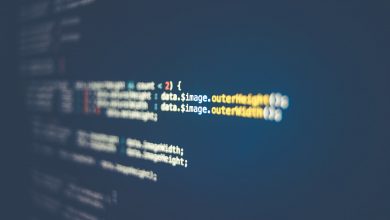
Spoiler Alert! In the final scene of the cult classic film, Fight Club, Academy Award nominated actor and actress Edward Norton and Helena Bonham Carter, respectively, stand hand-in-hand watching through a penthouse window as skyscrapers explode all around them and crumble back to the ground from which they grew like glass flowers, resetting the national debt of their diegetic world to zero. Back to square one.
Today, in the midst of an unprecedented viral pandemic that has already tragically claimed the lives of countless individuals around the globe, we all similarly sit hand-in-hand, quarantined and locked down #AloneTogether on our couches in the isolation of our homes, as we watch multitudinous technological, infrastructural, and economic elements of the society we’ve built up implode and crumble down around us through our own windows to the contemporary world: the pixels of our plasma televisions, computer screens, and smartphones.
-
Personal protective equipment (PPE) supply lines are failing because, in the digital age, the catastrophic combination of an archaic and molasses-paced paper-dependent privatized healthcare system, the application of “just-in-time” economics to healthcare management and operations, and the lack of an up-to-date national PPE stockpile has led to severe fragmentation of our nation’s hospitals and medical facilities, leaving states to fend for themselves and do whatever it takes in the midst of the pandemic to get their frontline medical professionals the PPE needed to safely treat their respective citizens and combat the virus in their respective states.
-
Despite leaps and bounds of improvement over the years in the cybersecurity sector and a federal investigation into international meddling in the most recent presidential election, voting for political office is still being done via paper ballot for alleged fear of fraud while sensitive tax information is permitted, if not encouraged by the Internal Revenue Service (IRS), to be filed online.
-
With most people – some of whom are immersed in mission-critical, life-or-death projects – stuck working from home due to coronavirus and relying on telecommunications and Internet connectivity for daily productivity, 5G implementation is stunted before it even begins due to the outmoded national copper-wire-based power and Internet infrastructure upon which the 5G “upgrade” is to be overlain and is thus already doomed to never truly reach its full connectivity potential. Meanwhile, other more rural areas of the country and the world somehow still lack reliable Internet and telecommunications connectivity altogether despite satellites being clearly capable of providing reliable global connectivity to even the darkest, most Internet-deprived corners of the virtual grid, especially with the vastly diminishing costs of privatized satellite launches and space travel thanks to Elon Musk’s SpaceX, not to mention its Starlink satellite Internet venture. This ambitious Starlink project currently sits at approximately 1% completion with only about 400 of a planned 40,000 satellites already in orbit overhead yet is set to begin private beta testing by the end of Summer 2020 and public beta testing by year’s end.
-
American roadways are deteriorating beneath our feet and tires alike, congesting both inter- and intra-state transportation and leading to excess pollution of our precious atmosphere.
-
Entire U.S. cities – namely Flint, Michigan – are without even the most basic of necessities that make life on Earth possible – clean drinking water – because of corroding lead pipes that were mandated in 1897 and have not been replaced or upgraded in several decades.
-
The vast majority of the scientific community would agree that an overabundance of carbon emissions and multifarious other types of pollution over those same past decades seems to be causing a worldwide over-correction towards a new global equilibrium through an extended series of sweeping superstorms and inclement weather patterns that tear power lines out of the ground – power lines which realistically have no business at all being above ground anymore anyway given the availability of subterranean power-delivering technology today – and cripple entire U.S. cities, uprooting homes, businesses, and sometimes entire communities alike in the process while consequently costing American taxpayers billions of dollars.
-
In dystopian Darwinian fashion, brick-and-mortar businesses, even long-standing institutions such as Sears and the United States Postal Service (USPS) itself, are dying left and right. Countless technology-based start-ups that are too small to succeed amidst such unprecedented circumstances are failing and furloughing, if not firing, large swaths of their workforce under the enormous economic pressure of one of the worst recessions this country has ever seen while big banks and companies that are too big to fail dissipate trillions of federal dollars daily with little to no oversight or accountability.
-
As of the end of March 2020, global stocks had seen a historic downturn of at least 25% since February 20, 2020. Almost four years of national economic growth have thus been completely unraveled within the first quarter of 2020 as the unemployment rate soars towards a quarter of the population with experts estimating that as much as a third of the American population could very likely be left jobless before this epidemiological episode in our nation’s history is over.
Back to square one…
But square one does not have to be a bad thing at all. In fact, quite the opposite in terms of national infrastructure, technology, and the economy: square one could actually be a generational opportunity-in-disguise the likes of which we have not experienced since 32nd U.S. President Franklin D. Roosevelt’s (FDR’s) “New Deal” was precipitated by the Great Depression starting in 1929, about a decade prior to which the world was rocked by an H1N1 virus known as the Spanish flu, which killed about 675,000 Americans and 50 million people worldwide from 1918-1919.
For those who may have ditched or dozed off in high school history class, the “New Deal” was a series of programs, public works projects, financial reforms, and regulations enacted by FDR between 1933 and 1939 in response to widespread needs for relief, reform, and recovery from the Great Depression in 1929-1933. The result of FDR’s “New Deal” was a completely revamped national infrastructure, technological ecosystem, and economy that ushered in a new era of long-lasting American global superiority. Sound familiar? It should, because almost exactly one century later, we now find ourselves in yet another great depression following yet another unprecedented global pandemic with yet another opportunity to revamp our national infrastructure, technological ecosystem, and economy, another once-in-a-generation opportunity to go back to square one and put millions of jobless Americans back to work rebuilding the country from the ground up better than it was before using state-of-the-art technology as the foundation for a fruitful future.
What’s even more promising this time around, though, is that as a nation, we just so happen to be sitting on a stockpile – decades’ worth – of next-gen tech, such as fiber optic cable and magnetic levitation, that simply cannot be used to its full potential or, in some cases, at all within today’s inadequate infrastructure due to the outmoded foundational technology that was necessarily revamped thanks to the “New Deal” and similar initiatives in the mid-20th century but then unfortunately not touched again for decades… until now. If, as with most mainstream media topics today, this phenomenon needs some snappy name to bear a face and gain traction, call it the “Corona Deal” or whatever you want to call it, but the fact remains: the opportunity is here whether we’re ready or not, whether we like it or not, or whether we seize it or not.
Now, in order to build to build our shattered world back up again, this time far better than the last, it’s time for America and perhaps even for the entire planet to go back to square one, not for the sake of any sort of international idealism or dystopian Darwinian destruction but rather for the sake of requisite realism and consequent creation. Yes, many have already died. Yes, that is heartbreakingly tragic. But no, nothing can be done to bring back the dead. And no, the departed need not have died in vain.
We, now, get to decide why our friends, family members, colleagues, and acquaintances have died. We, now, can either do nothing and allow the cycle to repeat in another year, decade, or century by sitting idly by as our leaders repeatedly fail us in favor of profits in their pockets, or we, now, can seize the generational economic opportunity for technological growth, infrastructural rebuilding, and societal restructuring that the coronavirus poses and thereby ensure that the dead died for a reason: a better tomorrow. In this way, we all sit #AloneTogether – sheltered-in-place, quarantined, and locked down – as champions of a better tomorrow, and our respective voices, but more importantly our collective actions, today are the determining factors of that tomorrow. So, from what must seem now like the deep, dark depths of square one, I beseech you on behalf of the fallen: Rise, champion.





Leave a Reply
Thank you for your response.
Please verify that you are not a robot.